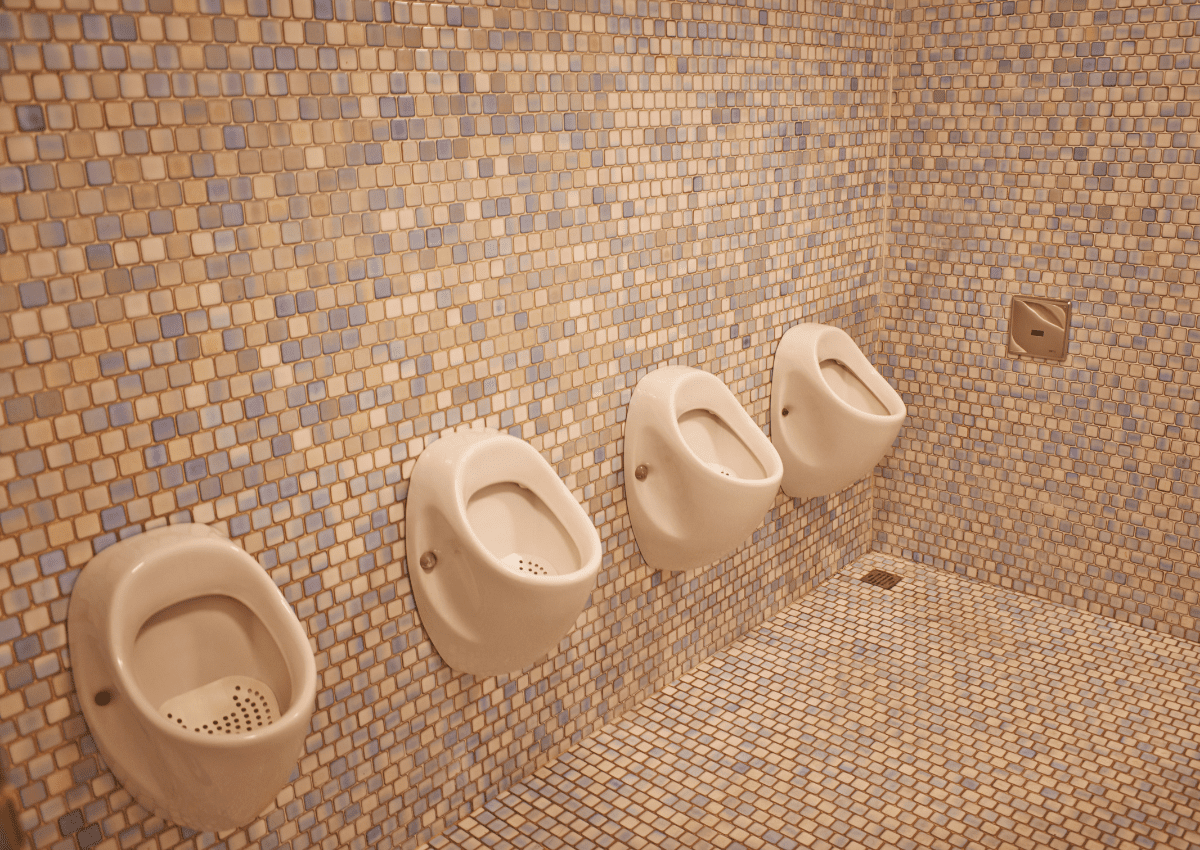
You’ve probably heard that waterless urinals save on water bills, but how do the costs to install and maintain these urinals really add up? Initial costs for both waterless and traditional urinals are similar, but the real savings are found in the ongoing expenses for using, cleaning, and maintaining your waterless urinals. Read on to see the breakdown of costs and how much you can save by making the switch.
Initial Costs
Whether you opt for a traditional urinal or a no-flush option, you can expect to have some initial expenses to purchase the urinals and have them installed. However, you may be surprised to learn that the cost of purchase and installation for a waterless urinal is about the same, or sometimes less, than a standard urinal.
While there are many brands and styles of waterless urinals on the market, the average cost is somewhere between $300 and $800. Without a flushing mechanism, installation is often easier for waterless urinals. Typically, the installation itself may cost around $300, but your plumber may charge anywhere from $60 to $90 per hour for labor.
Ongoing Costs
There are some ongoing costs associated with cleaning and maintaining your waterless urinals, but you’ll find they are often much lower than the costs of maintaining traditional urinals. These costs include:
Utility Costs
This is where you’ll find the biggest savings. Most traditional urinals use between 1 and 3 gallons per flush, with older models pumping out up to 5 gallons! According to the EPA, a standard urinal could use up to 26,000 gallons of water a year, and that will certainly impact your utility bill. As the name suggests, waterless urinals are waterless. This means that no matter how many times the urinal is used, it won’t impact your utility bills at all!
Cleaning Costs
If you currently have traditional urinals in your restrooms, your cleaning crew probably uses strong chemicals, scrub brushes, and plenty of water to keep them clean. The process of cleaning a no-flush urinal is much simpler. In fact, harsh chemicals and scrubbing could damage the urinal’s nonporous basin. To clean a waterless urinal, simply spray it with a manufacturer-recommended cleaner and wipe it with a soft cloth. This not only saves on the costs of cleaning products, but it also saves time for your crew!
Maintenance Costs
A broken urinal can set you back time and money, not to mention frustration from your employees and customers. With a traditional urinal, common problems include a broken flushing mechanism or a clog in the drain line. Fortunately, a waterless urinal is much easier to maintain. Not only is there no flushing mechanism to worry about, but the cartridge and seal at the base of the urinal also keep items like toilet paper out of the drain line, making clogs and repairs almost impossible.
For your waterless urinal to continue functioning properly, the cartridge and seal inside the drain opening will need to be replaced regularly. These should be replaced every 6 months in a high-traffic restroom, or up to a year in less frequented restrooms. You can expect to pay around $50 to $100 per cartridge.
Odor Control Costs
It may sound a bit unpleasant, but when a traditional urinal is flushed, it can spray small particles of urine and bacteria into the air. This can lead to foul odors in the restroom and nearby spaces. Often, urinal cakes and deodorizers are used to mask the smell, leading to additional costs. Because waterless urinals aren’t flushed, they don’t spray particles into the air, and the cartridge and seal keep any foul odors trapped in the drain line, without the added costs of masking the smell.
Additional Savings
Because waterless urinals are more environmentally friendly, many utility companies are incentivizing their use. Your utility company may offer rebates and incentives when you install your waterless urinals. Incentives could even include partial or full reimbursement for the equipment itself. Be sure to contact your utility company before purchasing your waterless urinals to learn about the potential for these additional savings.
Switching to Waterless Urinals Could Lead to Big Savings
If you’re a business owner deciding between traditional or waterless urinals for your building, the answer is clear. While the cost to purchase and install both options is fairly close, the similarities stop there. Ongoing costs for cleaning and maintenance are much lower with waterless urinals, but the real savings will appear in your utility bills. Imagine bringing your yearly water usage from 26,000 gallons per toilet to 0 gallons per toilet! The choice is clear. With waterless urinals, you save time, money, and the environment.
